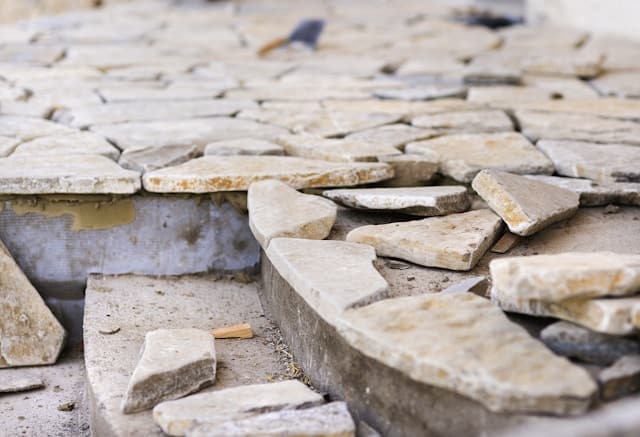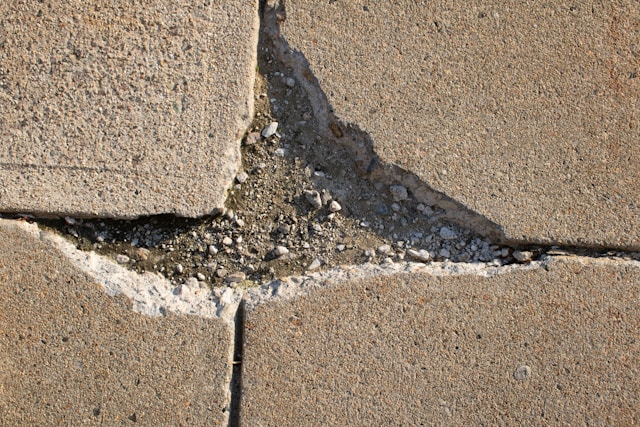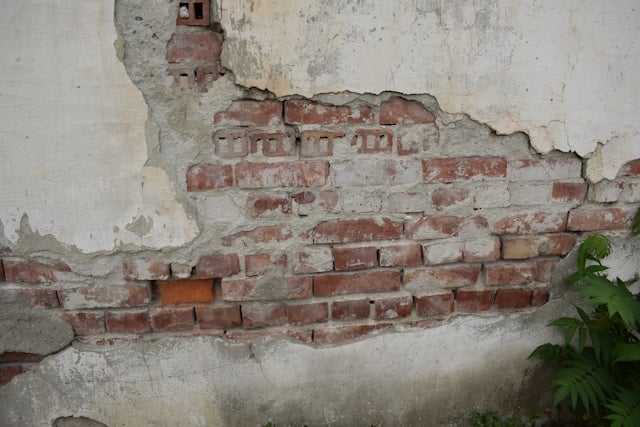Florida’s sunshine comes with a catch: endless humidity, sudden storms, and year-round moisture that can quietly wreck your home’s foundation. If you’ve noticed musty smells, hairline cracks, or damp walls, don’t ignore them. These are signs your home may need serious waterproofing help.
Foundation waterproofing isn’t just about sealing leaks, it’s about safeguarding your home’s structure, air quality, and resale value. Without proper protection, moisture can creep in, weaken the foundation, trigger mold growth, and lead to costly repairs down the line.
At Helicon, we specialize in protecting Florida homes with waterproofing solutions that work, tailored to the local climate, soil, and storm cycles.
In this blog, we will talk about:
- Why foundation waterproofing is essential for Florida homes
- Signs of water-related damage you shouldn’t ignore
- Trusted methods to keep your home dry and protected
Let’s walk through what really works to protect your foundation in Florida’s unique conditions.
Understanding Foundation Waterproofing in Florida
Water can cause serious damage to your home’s foundation if left unchecked. Knowing what foundation waterproofing is, why it’s important in Florida, and the common foundation issues you might face helps you protect your home and avoid costly repairs.
What Is Foundation Waterproofing?
Foundation waterproofing means applying barriers or systems to stop water from entering your home’s foundation. This can include coatings, membranes, drainage systems, or sealants that block moisture and water from seeping in.
In Florida, waterproofing often involves both exterior and interior methods. Exterior waterproofing protects walls and footings from outside water, while interior systems manage any moisture that gets through. These steps keep your foundation dry, reduce mold risk, and maintain your home’s strength.
Why Florida Homes Need Waterproofing
Florida’s climate is hot, humid, and rainy.
Heavy rainfall and high water tables mean water naturally pools around many home foundations. Without waterproofing, water can slip through cracks and porous materials. Water entering your foundation can lead to mold, mildew, and wood rot.
It also causes soil to shift under your home, increasing the chance of cracks or sinking. Proper waterproofing helps you prevent water damage and preserve your home’s safety over time.
Common Foundation Problems in Florida
Florida homeowners often face these foundation challenges:
- Cracks in walls or floors caused by soil movement.
- Wet basements or crawl spaces from water seepage.
- Sloping or uneven floors due to foundation settling.
- Mold growth in damp areas of the foundation.
Most problems start because water gets into the ground around your foundation. Addressing waterproofing early helps stop these issues and keeps your home stable.
Benefits of Waterproofing Florida Foundations
Waterproofing your home’s foundation protects it from water damage, keeps the structure strong, and reduces health risks caused by mold and mildew. These benefits help maintain your property’s value and provide a safer, more comfortable living space.
Preventing Water Damage
Water can seep into your foundation through cracks or porous surfaces.
In Florida’s wet climate, this risk is higher due to heavy rains and high humidity. Waterproofing creates a barrier that stops moisture from entering your foundation. By preventing water intrusion, you avoid costly repairs.
Water damage can cause erosion under the foundation, leading to settling or uneven floors. It also protects against stains and damage to walls and floors inside your home. You’ll benefit from lower repair costs and reduced risk of issues like flooding in basements or crawl spaces. This protection helps keep your home dry and structurally sound year-round.
Enhancing Structural Longevity
Your foundation supports the entire house.
When water weakens or erodes it, your home’s stability is at risk.
Waterproofing extends the life of your foundation by protecting it from moisture-related wear. Moisture can cause soil to shift, putting extra pressure on the foundation. Waterproofing helps keep the soil dry and stable around your home, reducing the chance of cracks, settling, or uneven surfaces.
Long-lasting foundations mean fewer maintenance headaches and better safety. Investing in waterproofing today protects your home’s strength for many years.
Reducing Mold and Mildew Risk
Moisture in your foundation can lead to mold and mildew growth, which can affect your indoor air quality.
Mold often appears in damp, dark areas like crawl spaces or basements. Waterproofing stops moisture from entering, cutting off the conditions mold needs to grow. This helps you avoid musty smells, allergic reactions, and health issues caused by mold spores.
Keeping your foundation dry means your living spaces stay healthier. It also prevents costly mold remediation and damage to building materials inside your home.
Types of Foundation Waterproofing Methods
Protecting your Florida home’s foundation requires different waterproofing methods based on soil, water levels, and structure type. These methods address moisture from outside and inside the foundation and improve how water moves around your home to prevent damage.
Exterior Waterproofing Solutions
Exterior waterproofing stops water before it reaches your foundation walls.
It usually involves digging around the outside of your home to apply waterproof membranes or coatings. These materials create a barrier that blocks moisture from penetrating the concrete. A key part of this solution is installing a drainage layer, like gravel or a drainage board, to help water flow away from the foundation.
This method works well in Florida’s wet climate because it protects your home from heavy rain and high water tables. Exterior waterproofing is often installed during new construction or major repairs and is considered one of the most effective ways to keep moisture out for the long term.
Interior Waterproofing Systems
Interior waterproofing tackles water that enters your basement or crawl space.
It usually involves sealing walls with waterproof paint or coatings to stop moisture from entering.
Drainage channels and sump pump systems may also be installed inside to capture and remove water. While interior systems don’t stop water outside the foundation, they help manage leaks and prevent mold and damage inside your home. This option is often quicker and less costly than exterior methods and works well when exterior access is limited.
Using interior waterproofing with proper drainage can keep your basement dry and protect your home’s structure and air quality.
Drainage Improvements
Good drainage is key to foundation health in Florida.
Drainage improvements direct water away from your home’s foundation to reduce pressure and moisture buildup. Common drainage methods include French drains, gutters, and swales. French drains are gravel-filled trenches with pipes that carry water away from foundations.
Gutters collect rain from your roof and channel it through downspouts away from your home. Swales are shallow ditches that redirect water flow naturally. Improving drainage helps relieve soil pressure and stops water from pooling near your foundation. This reduces the risk of cracks and structural problems caused by moisture.
Well-planned drainage works best combined with other waterproofing methods.
Signs Your Florida Home Needs Foundation Waterproofing
Water can cause serious problems to your home’s foundation if it’s not managed properly. Pay attention to cracks, water marks, and areas where water collects around your house. These signs often mean your foundation could use waterproofing to prevent further damage.
Visible Cracks and Water Stains
If you notice cracks on your foundation walls or in your basement, these could be signs of water pushing against the foundation. Cracks may appear as thin lines or wider gaps, sometimes with water stains around them.
Water stains often look like discolored or damp areas on walls or floors near the foundation. Over time, water can seep through these cracks, making the problem worse. Addressing visible cracks early helps protect your home’s structure and avoid costly repairs.
Waterproofing seals these weak spots to keep moisture out and your foundation stable.
Musty Odors and Mold Growth
A damp basement or crawl space often smells musty or stale.
This is a common sign that water is seeping in and causing mold or mildew to grow. Mold growth appears as dark spots on walls, ceilings, or floors near the foundation. Mold can affect your home’s air quality and cause health issues.
If you notice these odors or spots, it’s important to check for leaks or moisture problems in your foundation. Waterproofing your foundation helps keep mold at bay by stopping water from entering these areas.
Pooling Water Around Foundation
Look around your home after it rains to spot any water collecting near your foundation.
Standing water puts pressure on your foundation walls and can cause soil to expand and contract, leading to cracks or shifts in your foundation.
Poor drainage or low ground spots around your house increase this risk. You should see a professional assess your drainage and suggest waterproofing solutions like drainage systems or sealants.
Managing water around your foundation protects your home’s stability for the long term.
Choosing the Right Waterproofing Materials
Picking the right materials for waterproofing your Florida home’s foundation is key to keeping water out and preventing damage. You’ll want to focus on materials that handle heavy moisture, resist mold, and last through Florida’s weather.
Two main material types offer strong protection: membranes and coatings.
Waterproofing Membranes
Waterproofing membranes act as a barrier between your foundation and water in the soil. You have two main types to consider: sheet membranes and liquid membranes.
- Sheet membranes come in rolls made of rubber or plastic. They are strong and durable but need precise installation to avoid leaks.
- Liquid membranes are applied like paint. They fill gaps and cracks, creating a seamless waterproof layer, which is helpful for uneven surfaces.
Both types block moisture effectively, but your choice depends on your foundation type and how easy it is to apply the material. For Florida homes, durable membranes that resist mold and mildew work best because humidity is high.
Sealants and Coatings
Sealants and coatings add extra protection to your foundation walls. These materials prevent water from soaking into masonry and concrete.
Popular options include:
- Waterproof paints like DRYLOK that create a thick protective layer.
- Asphalt-based coatings which are tough and water-resistant.
- Polyurethane and rubberized coatings that form flexible, strong seals.
These coatings are usually applied to the outside foundation walls to keep water from seeping through cracks. They protect against moisture damage and mold growth, which are common problems in Florida’s wet climate.
When choosing, pick materials designed for exterior use and approved by local building codes to ensure long-lasting results.
Professional vs. DIY Waterproofing for Florida Homes
Water damage in Florida homes can result from heavy rains, high humidity, and soil shifting. Whether you handle waterproofing yourself or hire a pro depends on the severity of the problem and the safety and cost factors involved.
When to Hire a Specialist?
If you see cracks in your foundation or water pooling near your home, it’s time to call a professional. Experts can spot hidden issues like drainage problems or soil instability that DIY methods might miss.
Professionals use advanced tools and techniques to fix not just the symptoms but the cause. For example, they may install drainage systems or apply exterior foundation waterproofing to stop water from entering for good.
Minor dampness or small leaks might be manageable with DIY products. But major cracks, mold growth, or standing water need expert assessment to avoid costly damage later.
Safety and Cost Considerations
Thinking of tackling foundation waterproofing yourself? It might seem like a quick way to save money, but without the right tools and know-how, it can actually cost you more in the long run. Here are key points to keep in mind:
- DIY Can Backfire: Without experience, you risk using the wrong sealants, missing deeper issues, or applying uneven protection. These mistakes can lead to structural damage, mold, or more water intrusion.
- Safety Isn’t Optional: Waterproofing involves handling chemicals, working in tight crawlspaces, and dealing with drainage systems. One wrong step can put your health or home at risk.
- Professional Repairs = Long-Term Value: While upfront costs are higher, pros ensure the job is code-compliant, weather-resistant, and built to last, especially important in Florida’s unpredictable climate.
- Peace of Mind Matters: Hiring an expert means no guesswork, no redos, and no sleepless nights during storm season. That alone can be worth every penny.
Maintenance Tips for Waterproofed Foundations
Keeping your foundation waterproofed means regular care is key to preventing damage. Paying attention to small details like checking for cracks and managing water flow around your home helps keep your foundation strong. Simple actions in these areas go a long way in protecting your investment.
Regular Inspections
Inspect your foundation at least twice a year, ideally before and after Florida’s rainy season.
Look for cracks or blisters in the waterproof membrane, and check inside your crawlspace or basement for any signs of moisture or leaks. Pay close attention to walls and floors near the foundation. If you spot cracks, seal them quickly to stop water from seeping in.
Also, check your sump pump to make sure it works well during heavy rainfall. Regular inspections let you catch problems early, saving you from costly repairs later.
Managing Landscaping and Drainage
Proper drainage around your home is essential.
Make sure the soil slopes away from your foundation by at least 6 inches over the first 10 feet. This helps rainwater move away instead of pooling near your walls. Keep gutters clean and free of debris so water flows smoothly through downspouts.
Avoid planting trees or large shrubs too close to the foundation. Their roots can cause shifts or cracks that hurt your waterproofing.
Instead, use ground cover or small plants that don’t hold excess moisture near the base of your home.
Cost Factors for Foundation Waterproofing in Florida
Knowing what affects the price of foundation waterproofing helps you plan your budget. Key factors include the costs of materials and labor.
Material and Labor Expenses
Materials like waterproof membranes, drainage pipes, and sealants make up part of your expense.
Labor costs can vary based on the home’s size, foundation type, and job complexity. Florida’s wet climate often requires extra waterproofing layers, which can increase material needs. On average, foundation waterproofing costs about $22 to $37 per square foot in Florida.
Labor may be higher here due to the state’s specialized techniques needed for water management. You might also face additional costs if repairs are needed before waterproofing, such as fixing cracks or drainage systems.
Long-Term Savings
Investing in waterproofing now can save you money later.
Proper waterproofing stops water from entering your foundation, reducing risks like mold growth and structural damage. This lowers future repair bills and can improve your home’s value.
By acting early, you protect your home’s stability and avoid emergency fixes.
Common Mistakes to Avoid
Water can cause serious trouble when it gets into your foundation. Avoiding key errors in how you protect your home helps keep water out and saves you from expensive repairs later.
Improper Application Techniques
Applying waterproofing materials the wrong way is a common issue.
If the surface isn’t cleaned and dried properly before you start, the waterproof layer won’t stick well. This lets water seep through cracks or weak spots. Another mistake is using materials that don’t match Florida’s climate challenges.
You need products designed to handle heavy rain, humidity, and shifting soil. Skipping layers or applying too thin a coat reduces protection.
Waterproofing should be done carefully, with attention to every corner and crack to form a solid barrier.
Ignoring Early Warning Signs
Small cracks, damp spots, or mold near your foundation are early signs you shouldn’t ignore. These often point to moisture beginning to get in.
If you don’t act quickly, water damage can worsen, damaging your home’s structure and costing more to fix. Watch for musty smells or water stains inside your basement or crawl space.
Checking these signs early helps you avoid bigger problems by getting repairs and waterproofing done promptly.
How to Choose the Right Waterproofing Product for Your Foundation?
Not all waterproofing products are created equal. The right choice depends on your foundation type, local soil conditions, and the severity of water intrusion. Some products are better for sealing hairline cracks, while others offer long-term moisture barriers or soil stabilization. Using the wrong product may result in short-term fixes that don’t last, costing you more in future repairs.
The comparison table below breaks down popular waterproofing solutions, helping homeowners make informed decisions before speaking to a professional.
| Product Type | Best For | Pros | Limitations | Used By Pros? |
| Polyurethane Foam | Cracks, voids, small leaks | Expands to fill gaps, fast-curing | Not ideal for wide-spread water issues | ✅ Yes |
| Bentonite Clay | Soil-side waterproofing | Natural, expands with moisture | Can crack in dry conditions, tricky to apply | ⚠️ Sometimes |
| Cementitious Coating | Basement walls, interior sealant | Easy to apply, durable under high pressure | Rigid — not good for foundations with movement | ✅ Yes |
| Liquid Rubber Membrane | Exterior foundation waterproofing | Flexible, seamless, UV-resistant | Requires clean, dry surface for proper adhesion | ✅ Yes |
| Sheet Membranes | Exterior walls with direct access | Very durable, excellent barrier | Labor-intensive, not ideal for complex foundations | ✅ Yes |
| Silicate Sealers | Interior basement walls | Penetrates concrete, strengthens surface | Doesn’t stop active leaks, only moisture resistance | ⚠️ Limited |
Final Thoughts
Waterproofing your foundation isn’t just about keeping water out; it’s about protecting your home, your investment, and your peace of mind.
Florida’s climate can be tough, but with the right strategy and expert help, your foundation can stay strong for years to come. DIY fixes might seem tempting, but cutting corners often leads to more damage and higher costs down the line.
At Helicon, we’ve helped thousands of homeowners secure their foundations with customized waterproofing solutions tailored to their property’s needs. Our team takes the guesswork out of the process so you can feel confident every step of the way.
Call us today or book a free consultation to see how we can help protect your foundation for the long haul.
Frequently Asked Questions
Waterproofing your foundation might seem simple on the surface, but there’s a lot that homeowners often wonder once they start digging into the details. Curious about materials, safety, or what could go wrong if you wait too long? Let’s clear up some of the most searched questions.
What happens if I delay waterproofing my foundation?
Waiting too long can lead to mold growth, wood rot, or even cracked walls and floors. It’s not just about water; it’s about the damage moisture causes over time.
Is waterproofing different for slab vs. crawlspace foundations?
Yes, crawlspaces often need vapor barriers or encapsulation, while slab foundations usually require exterior coatings or sealants. The approach depends on your structure and how water is entering.
Can waterproofing help lower my energy bills?
Absolutely. Moisture can mess with insulation and air flow, forcing your HVAC system to work harder. A dry foundation keeps the temperature more stable, which helps reduce energy costs.
Do I need a permit for foundation waterproofing in Florida?
In many Florida counties, yes, especially for exterior work. A professional contractor will handle permits and ensure everything follows local codes and environmental regulations.
How long does professional waterproofing usually last?
Depending on the method used and local conditions, a professional job can last anywhere from 10 to 25 years or more. Quality materials and proper application make all the difference.





